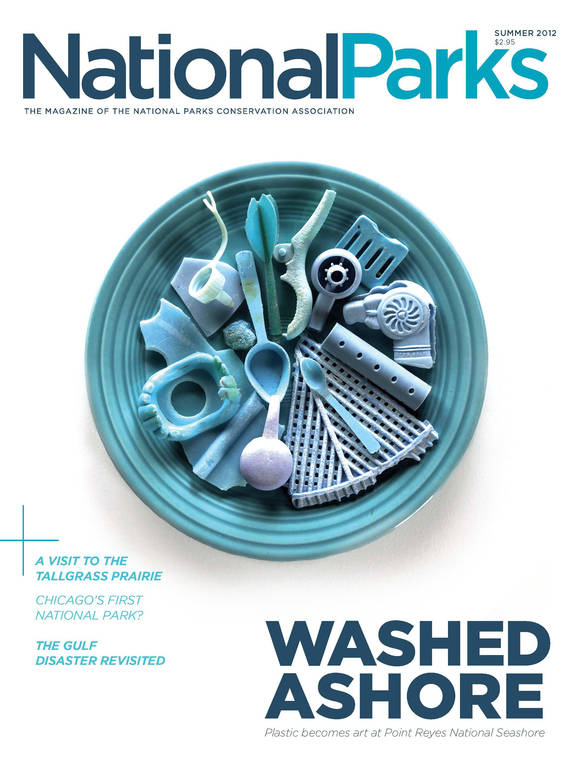Summer 2012
A Breath of Fresh Air
EPA is renewing its vow to protect our most sacred views.
If you’ve ever found yourself gazing out at a national park and struggling to see through the haze, take heart. Those vistas could clear up significantly in the years ahead.
This March, a U.S. District Court approved a landmark agreement, or a “consent decree,” between the Environmental Protection Agency (EPA) and a coalition of clean-air advocates led by NPCA. The decree establishes firm, enforceable deadlines for cleaning up air pollution in national parks and wilderness areas in 35 states, the District of Columbia, and the Virgin Islands.
It’s been a long time coming. In 1977, Congress adopted, with sweeping bipartisan support, a program to protect visibility in these sacred landscapes in amendments to the Clean Air Act. But as is often the case with environmental initiatives, progress has been slow. The powerful coal industry persisted in its lobbying efforts. Administrations changed, and progress made by one president stalled under another. The EPA became so busy trying to regulate air quality in urban areas that national parks took a back seat. And when the agency finally set a deadline of December 2007 for states to submit plans to eliminate haze in the national parks, states either missed the deadline or submitted inadequate proposals.
“These issues don’t always get resolved with one lawsuit or one session of Congress,” says Mark Wenzler, who leads NPCA’s national clean air and climate programs. “Sometimes it takes a generational commitment, especially when you’re dealing with such powerful adversaries. Almost all advocacy unfolds this way. The big stuff is messy, and it can take a long time, but NPCA has been there at every turn—building coalitions, fighting off delays, and filing lawsuits when necessary.”
Recently, however, the floundering economy has put clean-air regulators in a tricky position. No government official wants to be perceived as imposing pricey regulations during a national recession, no matter the long-term benefits.
“When the economy’s in a fragile state, it’s really easy to attack the EPA for overregulating the economy, raising electricity prices, and cutting jobs,” says Wenzler. “It’s an unfortunate perception, because the EPA has done none of these things. In fact, we’ve seen time and again that industry is able to make pollution cuts in a cost-effective manner that does not harm consumers.”
“It’s just a scare tactic,” adds Dave Norris, former mayor of Charlottesville, Virginia, located about 20 miles outside Shenandoah National Park. “The truth is, quite a few jobs would be created in the process of retrofitting some of these plants, and quite a few jobs would be preserved in the process of cleaning the air in our national parks. And when you consider the impacts to human health and the costs required to treat the medical conditions caused by dirty air, there’s actually going to be a net benefit for our country [$8.4 to $9.8 billion annually in saved health-care costs by 2015, according to the EPA]. So we can’t listen to the fear tactics and the naysayers—we’ve just got to do the right thing.”
For years, NPCA and its allies were involved in litigation seeking to force the EPA to implement the Clean Air Act’s visibility protection program. Then, last fall, Norris and other clean-air advocates from around the country joined NPCA in Washington, D.C., to encourage EPA officials to set firm deadlines and ensure that state plans actually resulted in better air quality in the parks. “The staff we met with agreed that the Clean Air Act needed to be fully enforced, but they were feeling pressure in certain quarters on Capitol Hill to weaken the law,” Norris says. “Essentially, our message was, ‘We’ve got your back. We want you to stand strong and do the right thing, and you’ve got people all over the country who are going to support you, even if it means taking on the more powerful opposition.’ In the eyes of the public, enforcing the Clean Air Act is a relatively noncontroversial thing that government is and should be doing.”
The consent decree isn’t the only victory worth noting. Some park units have already begun to see improvements. Consider Mount Rainier National Park in Washington: In 1972, the nearby Centralia power plant began emitting dangerous levels of sulfur dioxide—a pollutant that blankets vistas and threatens the health and balance of plants and animals. So in 1995, staff from Mount Rainier invited a wide range of stakeholders—including the owners of the power plant—to come together and figure out how to protect the park. After 18 months, they reached a consensus: The power plant would reduce sulfur dioxide emissions by 90 percent.
It was a huge victory, but the fight to protect parks in the Northwest isn’t over. The same Centralia power plant is still emitting harmful amounts of nitrogen oxide, which contributes to haze and threatens the health of high-altitude ecosystems. Then in April 2011, as part of a stakeholder negotiation process involving NPCA, Centralia agreed to retire one of its coal units in 2020 and the other in 2025; the plant also will install new technology by 2013 to reduce nitrogen oxide.
A handful of other states have already proposed promising plans, but there’s still plenty of work left to do. “Because of this consent decree, we could start to see major changes over the next several years,” Wenzler says. “It’s not going to happen by itself—we have to continue advocating for strong plans in each of these states—but we have the law and firm deadlines on our side. We’re turning a corner to a much brighter future for the national parks, and NPCA is at the epicenter of it.”
About the author
-
 Amy Leinbach Marquis
Amy Leinbach MarquisAmy Leinbach Marquis is former associate editor at National Parks magazine.



